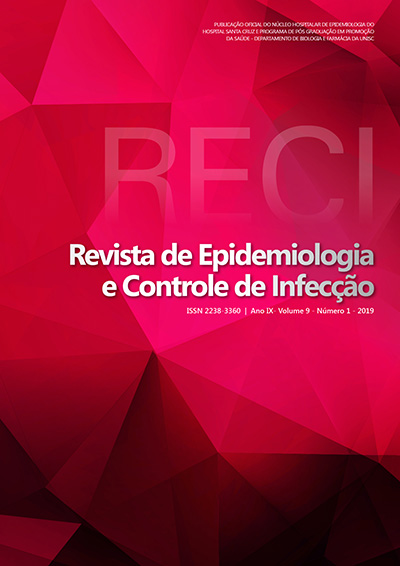Temporal trend of leprosy in Aracaju, Sergipe, Brazil
DOI:
https://doi.org/10.17058/reci.v9i1.11957Keywords:
Epidemiologia, Indicadores de Saúde, HanseníaseAbstract
Background and Objectives: Leprosy is a chronic infectious disease that has a disabling potential and maintains high incidence rates even with effective and free treatment. Thus, this study aims to analyze the epidemiological and operational data of leprosy in the city of Aracaju, Sergipe, Brazil, in order to diagnose the endemic disease trend and guide the improvement of public policies aimed at its elimination. Methods: This is an ecological and time series study that analyzed the epidemiological and operational indicators of leprosy in the municipality of Aracaju, capital of the state of Sergipe, from 2003 to 2017. Results: Between 2003 and 2017, detection rate of leprosy remained decreasing, with an annual decline of 8.63% in the general population and 9.32% in children under 15 years. During this period, there was a trend to increase the diagnosis and treatment of leprosy by Primary Care. The cure of the cases remained stable and the proportion of contacts examined showed significant increase, rising from 20.6% in 2003 to 82.9% in 2017. There is also a progressive trend to decrease the detection rate of paucibacillary forms due to multibacillary forms. Conclusion: There is a trend to reduce the detection of leprosy in Aracaju in all age groups, but the region is still considered to be highly endemic. It is possible to perceive the growth of the Primary Care role between 2003 and 2017, in addition to the significant increase in the examination of contacts as an important tool in the diagnosis and early treatment. Although health indicators have shown improvements, this progress remains insufficient for adequate control of the disease. Keywords: Epidemiology. Health Status Indicators. Leprosy. Public Health.Downloads
Downloads
Published
How to Cite
Issue
Section
License
The author must state that the paper is original (has not been published previously), not infringing any copyright or other ownership right involving third parties. Once the paper is submitted, the Journal reserves the right to make normative changes, such as spelling and grammar, in order to maintain the language standard, but respecting the author’s style. The published papers become ownership of RECI, considering that all the opinions expressed by the authors are their responsibility. Because we are an open access journal, we allow free use of articles in educational and scientific applications provided the source is cited under the Creative Commons CC-BY license.


